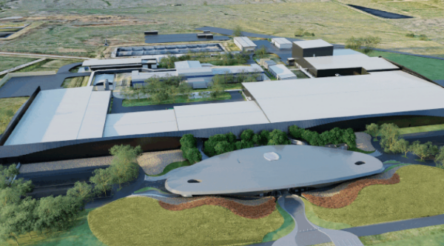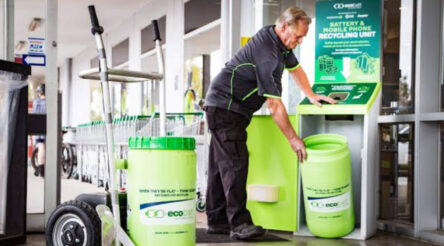Healthcare PPE, standard protocols and contingency planning: How do we flatten the curve of demand for PPE as we flatten the curve of infection rates?

By Meriel Chamberlin
Risk Management. This hangs over most enterprises and governments like a cloud. Every decision, policy, and product must be ‘de-risked,’ for both liability and possible bad press. Whether it’s a class walk to the park or the procurement of a fighter jet there are records of risk assessments, and contingency plans, and in the case of vaguely complex decisions, a report from an expensive independent consultancy.
How then have we managed to have decades of WHS processes and procedures, outsourcing and supply chain protocols, and pandemic and emergency planning, yet no-one has run a scenario of the risk of completely running out of single-use PPE, (in particular, gowns and masks), locally, nationally and globally? No-one seems to have tackled ‘what if we run out?’ other than to assume the worker has the choice to down tools and walk away!
Contingency notes are commonly just a version of “try and use it for longer than the manufacturer’s recommendations and see if you can sterilise it!“ Then at the other end of the spectrum, for masks at least, is some research on homemade cloth options and improvised use of kitchen towel and cloth for general citizens.
Even now, in this time of extreme shortage, procurers and bureaucrats are clinging to specifications for fear of litigation, even though the use of such items outside of the recommended protocol puts them at liability risk anyway.
How do we allow ourselves to pragmatically approach the following questions?
1) How does this PPE protect against this hazard?
2) Can anything else work? If so, how well, and in what task situations?
3) Is there a system of reusable items that could work with correct SOPs?
4) What did we do before disposables?
- We managed complex open surgery, and immunocompromised patients.
- What did we do?
- What were the benefits and limitations?
- What are the reasons we changed?
- clinical (lower infection risk, from either improved product performance or lower risk of poor procedure)
- cost (easier to manage, less labour, no laundry)
Anyone with experience with real-life situation management, where time is critical, will understand the problem solving thought process above, for example from the following fields:
– Military
– Event Management
– Disaster Response and Recovery
– Supply Chain: food, medicine, construction, uniform, apparel,
– Travel and Tourism, especially in exotic, adventurous and remote locations.
Simply, in a situation where people are at immediate risk and the normal tools and supplies are not to hand, trying to continue as if the normal tools and supplies were to hand without immediately methodically understanding the nature of the current risk, and exploring alternatives could be considered naïve or even negligent.
It’s clear that almost the whole world has been caught short with regard to PPE. Some have managed better than others, by applying recent experience and local capability, all are managing an exceptional situation. The only real question for those countries with wealth to throw at this is why has it been so hard for institutional procurers and bureaucracies to activate exceptional and pragmatic approaches to the entire system of infection control?
The global race for PPE continues as Covid-19 exponentially spreads. The equipment sought is designed to protect the wearer from a myriad of hazards. These Include smoke and dust particles, hideous blood- and liquid-borne diseases, and these features have been applied to essential protection protocols against pathogens in droplets and aerosols.
As we make plans to move carefully out of lockdown we are having to do this at a time of extreme scarcity Decision makers, employee advocates and health advisors are trying to improvise their way through a system that needs reusable solutions, and accompanying guidance for effective use, yet all the tools and protocols have been designed solely for a linear system functioning in abundance.
Quite simply our system of standardised and regulated single-use PPE isn’t fit for purpose in the face of an emergency with globally scarce resources.
What is abundantly clear is that we can do better than nothing. In the face of re-using items designed to be used for minutes or an hour, rather than days on end, clear analysis around the efficacy of these options at this time of scarcity, and non-conforming PPE practice, is needed.
While this discussion may seem to be about whether we should always be using disposables or reusables, it isn’t. It’s about could we use either safely if they are what is to hand, and in which situations are they best? What are the SOPs to maximise infection control? Can we stand up reusable gown practices to protect health and care workers even better than they are now?
This question also becomes of great value as the cost to us all of current PPE has understandably increased exponentially with the demand. Not only is sheer availability now a challenge, information to enable good financial decisions around resourcing the protection systems for our health care workers can’t be made without clear guidance about available effective alternatives, and which of those can be reliably delivered with local available manufacturing capability.
Meriel Chamberlin is Founder and Creator at Full Circle Fibres. To continue the conversation, connect with her on LinkedIn here and follow Wear and Care here.
Subscribe to our free @AuManufacturing newsletter here.
@aumanufacturing Sections
Analysis and Commentary Awards Defence Manufacturing News Podcast Technology Videos










